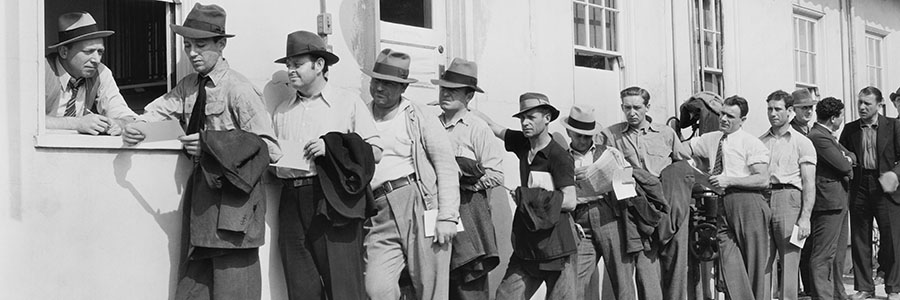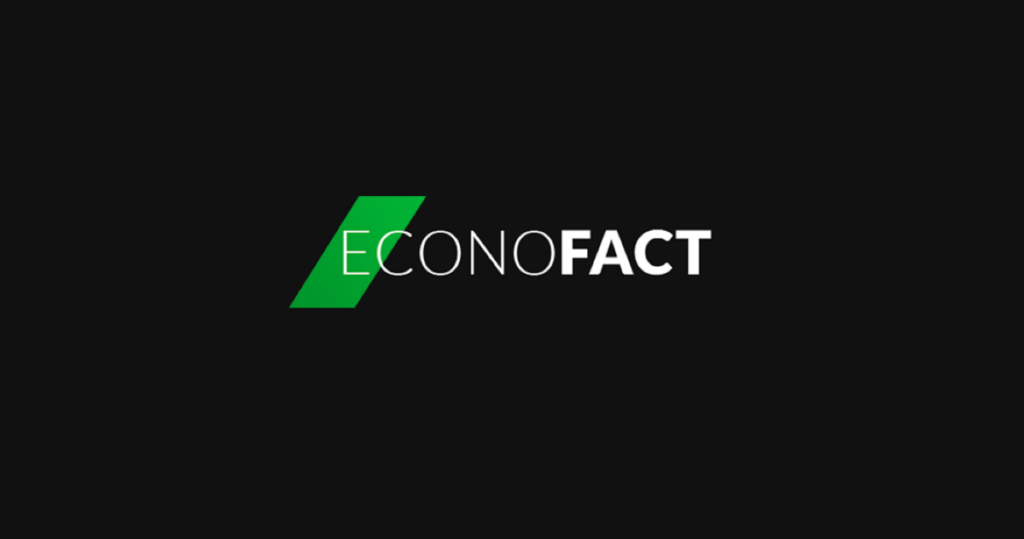
Unemployment Data: Is the Economy Healthy?

Concepts

In this economics lesson, students will learn about economic data and what they communicate about the health of the economy.
Description
This series of lessons will introduce you to economic data that economists use to assess the health of the economy. You will learn about economic data and what they communicate about the health of the economy. This lesson focuses on the unemployment rate, which is important data for analyzing the health of the broader economy. Students will learn how the unemployment rate is calculated, what the natural rate of unemployment is, and how unemployment is related to economic growth and inflation.
Introduction
ESSENTIAL QUESTION: What do unemployment data say about the health of the economy?
This lesson is part of a series that asks students to assess the current health of the economy by examining current economic data. This lesson focuses specifically on unemployment data provided by the Bureau of Labor Statistics and available on the St. Louis Fed’s FRED data website. Students will learn what the Civilian Unemployment Rate measures, what the current unemployment rate is, and then analyze the current unemployment rate relative to an estimate of the natural rate of unemployment. This will be done as part of an assessment of the broader economy.
Learning Objectives
• Define unemployment and unemployment rate.
• Calculate an unemployment rate from provided data.
• Examine the most recently reported unemployment data.
• Explain the relationship between unemployment, inflation, and economic growth.
• Determine a trend based on the five most recent unemployment rate releases.
• Explain what current unemployment data reveals about the broader economy.
Resource List
- Activity 1: Calculating the Unemployment Rate
- Activity 2: Analyzing Unemployment Data
- Visual 1: Key Facts about the Unemployment Rate
- Visual 2: Benchmark: The Natural Rate of Unemployment
- Unemployment Data Dashboard
- https://preview2.econedlink.org/resources/employment-and-unemployment-video-and-quiz/and review questions (run time 0:52)
- Page One Economics: Making Sense of Unemployment Data (optional):
- The Economic Lowdown podcast series: Unemployment (optional, run time 9:02)
Process
1. Ask the students if they have been to the doctor for a health check-up recently. Remind students of the routine: A nurse likely started the process with some routine tests to collect information – perhaps she strapped a band around your arm and pumped it full of air to test your blood pressure. Then she might have taken your temperature, looked in your ears and eyes with a light, and tested your reflexes with a small hammer.
2. Ask the students why all of this was necessary. Students might suggest that the nurse is collecting information about how your body is functioning. Tell students that this process is “data collection.”
- The nurse collected relevant information on your health to be assessed by the doctor. The initial data check helped the doctor identify potential problems – determining if there were any data that seemed out of order.
- If everything checked out, the doctor likely gave you her assessments, maybe some advice on eating healthy and exercising, and bid farewell until your next appointment.
- If, however, the data showed some irregularities, the doctor likely asked for further tests – collecting more data to observe. Many times the doctor’s diagnosis requires treatment – prescription medicines or even surgery.
- All of this is meant to check the state of your health, and if it is needed, to use treatment strategies to return you to health.
3. Tell the students that the economy, like the human body, is extremely complex. And like the body, most times the economy functions very well on its own. However, there are times when the economy suffers maladies such as recessions or periods of high inflation that require treatment. And like the body, early detection of potential problems will prevent more serious issues and will likely mean less invasive treatment.
4. Tell the students that economists use economic data to assess the health of the economy. And economists use economic data to assess whether treatment is necessary.
5. Ask students to define unemployment – is anyone who does not have a job unemployed? Discuss the following:
• Define unemployment as the number of people without jobs who are actively seeking work. Tell students that people are counted as unemployed if they are at least 16 years old, do not have a job, and are actively seeking employment.
• Tell the students that there are many people who do not have jobs that are not counted as unemployed.
• For example, there are many people who choose not to work: retired people, some full-time college students, and parents who choose to stay home to care for children.
• In addition, there are people who are not working, would like a job, but are not actively looking for work – because they are not seeking employment, they are not counted as unemployed.
6. Tell the students that knowing the number of people who are unemployed is useful, but it is more useful to know how many people are unemployed relative to the size of the labor force, which is the unemployment rate. Define the unemployment rate as the number of unemployed people expressed as a percentage of the labor force. Watch the https://preview2.econedlink.org/resources/employment-and-unemployment-video-and-quiz/ and complete the review questions.
7. Give each student a copy of Activity 1: Calculating the Unemployment Rate. Review the unemployment formula information on the top of the sheet and direct students to complete the application at the bottom. When they have finished, review the calculation to ensure that each student has calculated correctly. (The correct answer is 10 percent.)
8. Display Visual 1. After discussing the information with students, ask students to summarize why economists might use the unemployment rate to assess the health of the economy. (A rising unemployment rate often indicates a weakening economy.)
9. Give each student a copy of Activity 2: Analyzing Unemployment Data. Tell the students that they will record the key aspects of unemployment as you progress together through the lesson.
10. Ask students if they know what the current (most recent) unemployment rate is. Show the Unemployment Data Dashboard. Tell students that the dashboard includes key data that will be used to assess the health of the economy.
• Economists are quick to remind people that one piece of data is not a trend. Box 1 contains a list of the most recent 20 months of unemployment data. Ask students to record the most recent six months of data (ex. “4.6 percent”) as well as the month and year of the release (ex. “Nov 2016”) in the table on Activity 2.
11. Refer students to Box 2. Tell students that an upward sloping line indicates a rising unemployment rate and a downward sloping line indicates a falling unemployment rate.
• Ask student to describe how the unemployment rate has changed since 1948. (The line goes up and down like a roller coaster.)
• Tell students that areas that are shaded gray identify recessions. A recession is a decline in the rate of national economic activity, usually measured by a decline in real GDP for at least two consecutive quarters (i.e., six months). Ask students to identify what happens to the unemployment rate during recessions. (Unemployment often rises during recessions.) Ask students to record their observation on Activity 2.
• Ask students to focus on the direction of the most recent line segment. Is the line currently upward sloping or downward sloping? Tell students to include information from Boxes 1 and 2.
12. Ask the students how a doctor knows whether your blood pressure data might indicate a potential health problem. Tell the students that the doctor will compare your blood pressure to a benchmark, or acceptable range. If the reading is too low or too high, it might indicate a health problem.
13. Tell the students that economists compare recent unemployment data to a benchmark in order to identify potential problems. That benchmark is the natural rate of unemployment. Display Visual 2: Benchmark: The Natural Rate of Unemployment, and discuss the information. Use data in dashboard Boxes 3 and 4 to record and analyze the natural rate of unemployment data.
14. Refer to the last graph on the economic dashboard . The difference between the current unemployment rate and the natural rate of unemployment is an indication of how much the unemployment rate is due to economic weakness — recessions or insufficient spending in the economy. This graph shows unemployment information in a historical context (since 1948). Using this information, how much unemployment can be attributed to economic weakness or recession? Ask students to record their answers on Activity 2.
15. Ask students to complete their analysis on Activity 2.
16. Discuss key content with students to ensure they understand what the unemployment rate reveals about the health of the economy. Ask the students to describe their assessment and defend it using data.
Conclusion
Unemployment data are among the most watched economic data. The unemployment rate indicates whether the economy is growing fast enough to generate enough jobs for job seekers. Comparing the unemployment rate to the natural rate of unemployment is a useful way of determining whether the economy is operating near its potential or if there are economic health problems that exist or that might lie ahead.
Extension Activity
FRED data are likely available for your state, county, and Metropolitan Statistical Area (MSA). For example, click the following links to examine economic data about Minneapolis, MN. Use FRED to find data about your local economy and write a short economic report about the state of the local economy. Start by entering the name of your city, county, or state in the search box on this page .
https://fred.stlouisfed.org/graph/?g=cLRY
https://fred.stlouisfed.org/graph/?g=cLRZ
https://fred.stlouisfed.org/graph/?g=cLRV
Assessment
When the economy is growing, what often happens to the unemployment rate?
A. The unemployment rate will likely decrease.
B. The unemployment rate will likely increase.
C. The natural rate of unemployment will likely increase.
When the current unemployment rate is higher than the natural rate of unemployment:
A. The inflation rate is likely rising.
B. Labor markets are becoming more competitive.
C. The economy is not producing enough jobs to achieve full employment.
When the economy is in recession, what often happens to the unemployment rate?
A. The unemployment rate will likely decrease.
B. The unemployment rate will likely increase.
C. The natural rate of unemployment will likely increase.
Imagine a tiny economy that has a population of 200 people. Among them, five people are unemployed and 95 people are employed. What is the unemployment rate?
A. 50 percent.
B. 25 percent.
C. 5 percent.
D. 2.5 percent.
Related Resources


Grades 9-12
Economic Misery and Presidential Elections

Content Partner
Grades Higher Education, 9-12
EconoFact

Grades 9-12
